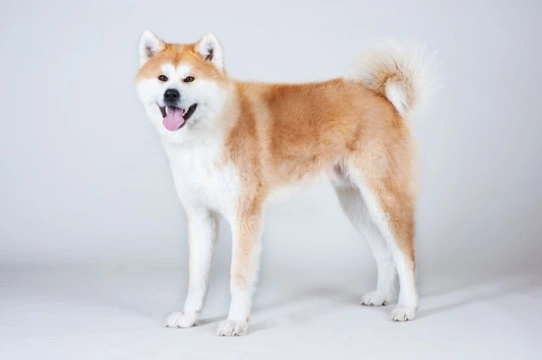
Dog Breeds With Curly Tails
When you think of the tail of the average dog, you probably think of it being long, straight and waggy! However, some dogs also have rather unusual-looking tails that have a distinctive kink or curl to them, which can be quite pronounced in some cases. This gives these dogs a unique and distinctive appearance all of their own, which can be highly appealing to some dog lovers!
If you love the look of a curly tailed dog, or are wondering how common a curled tail is and what breeds possess this trait, read on to learn more about some of the top dog breeds with curly tails.
Why does the tail curl in some dogs?
A curled tail can occur in any dog if their development causes this to happen, but in dog breeds whose tails are not supposed to be curled, this will stand against the dog in question as a breed fault. However, some dog breeds actually have their curly tail listed as a specific breed trait, and it is a must for conformation to the breed’s standards!
A curly tail isn’t like curly hair-a simple variant trait that is not particularly notable or distinctive, and a curled tail actually occurs due to a distinctive deviation from the norm in the development of the spine. It is important to remember that the tail of the dog contains bone and cartilage and is an extension of the spine itself, and not just something that is stuck onto the back as an afterthought!
The term used for the deviation that causes a curled tail is hemivertebrae, and it is a congenital anomaly that causes vertebrae to develop in a wedge-shape and affect the angle of the spin, its spacing, and consequently the shape of the tail. This condition can lead to neurological problems when it occurs further up the spine, but generally and in dogs where the curled tail is considered a desirable breed trait, only affects the tail.
The Pug
One of the best-know dog breeds that have a curled tail is the ubiquitous Pug, with the curliest tail of them all! The Pug’s tail can be slightly curled or corkscrew shaped like the tail of the pig, and rarely fully straightens out. However, if the tail of the Pug is massively curled or very tightly curled, this can in some cases indicate spinal problems as well.
The Pomeranian
The Pomeranian dog is a little lapdog with a long, glorious coat, and a tightly curled tail underneath all of their fur! The Pomeranian’s tail curls right up over the back when the dog is standing up, and its long fur cascades over their backs. Due to their long, fine fur, they need plenty of attention to be paid to their grooming and maintenance!
The Norwegian Elkhound
The Norwegian Elkhound is the national dog of Norway, which was bred to work alongside of hunters to bring down large elk. The tail of the Elkhound is again curled tightly and carried over the back of the dog. Norwegian Elkhounds are popular today both in Norway and across the world, as both guard dogs and companion pets.
The Keeshond
The Keeshond is a quiet, loving dog with a rich and luxurious coat and a very tightly curled tail! In some cases, the angle of the curl is so acute and the tail carried so close to the body that the dog may appear to have no tail at all!
The Chow Chow
The Chow Chow dog is short, sturdy and very fluffy, and known for its bright, inquisitive personality that some owners insist are very cat-like! The Chow Chow’s tail sits tightly curled against the dog’s back, in order to help to keep it warm in the very cold weathers that the Chow Chow is used to experiencing in the wild.
Shiba Inu
The Japanese Shiba Inu dog has a dense, thick coat that provides plenty of protection against cold weather, with a strong, thick and curled tail that loops right over the back like the handle on a teapot! The Shiba Inu is closely related to the Japanese Akita Inu, another curly-tailed dog. The main differences between the two breeds are their size, with the Akita Inu being significantly larger.
The Samoyed
The distinctive thick, fluffy white coat of the lovely Samoyed dog is one of its most distinctive features, closely followed by their looped, curling tails! The Samoyed’s tail curves right over the back and is carried high and proud when the dog is standing alert.
The Basenji
The Basenji’s most famous and best known trait is their reputation for being very quiet and not prone to barking, instead making a very distinctive yodelling sound instead! They also have curly tails, that run at a right-angle over the back of the dog and stay close to the coat.



